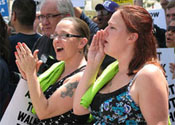 Listen to the audio story from Annenberg Radio News:
Listen to the audio story from Annenberg Radio News:
Dan Hindman has an anniversary this week – with Walmart.
“I’ve worked at Walmart… on the 17th, that’s three years,” he said. To support his son and put himself through school, “I do a little of everything. I do a little LP sometimes, I work electronics, I play management at times… I do it all, dude.”
But despite all this history, he’s not happy about the stores springing up in Los Angeles.
“I don’t live around Chinatown, but if I did, I would tell them definitely not to open up,” Hindman said. “Because I feel if you’re going to open up, you’ve got to treat your people correctly. Walmart doesn’t. Things they promise, they don’t follow through with it. I’ve been promised interviews with different departments. I haven’t seen an interview yet.”
Hindman and about a hundred other Walmart workers met in Los Angeles this week at a national Making Change at Walmart conference. There, they put together a list of demands to present at the Baldwin Hills Crenshaw Plaza Walmart today.
The protesters say their schedules are irregular and they’re not earning as much as Walmart promised. They’re disrespected at work. They want higher wages, guaranteed health insurance and Walmart’s promise that it will invest profits in communities.
But Michael Jones, CEO of the Crenshaw Chamber of Commerce, says that’s what Walmart already does in South L.A. When the store opened about a decade ago, it created more than 500 jobs, most of which went to residents.
“That had a tremendous, tremendous impact. Before that, there were people that were out of work, and they made it happen,” Jones said. “I understand people will talk about unfair wages and things like that, but compared to what? If someone is unemployed, and they’re getting paid even minimum wage, is that an unfair wage? We’ve had a tough, tough economy. People can have some dignity .”
In a statement released today, Walmart said they do offer competitive pay and affordable benefits.
But the workers leaving the conference in L.A. today plan to air their grievances at Walmarts all over the country.









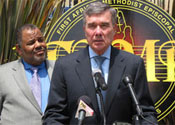 Listen to the audio story from Annenberg Radio News:
Listen to the audio story from Annenberg Radio News: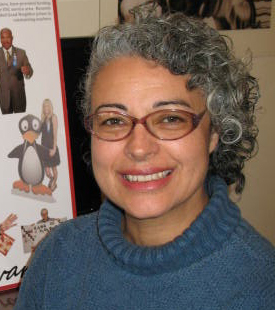 Jacqueline Hamilton in a file photo (Photo by Karla Robinson)
Jacqueline Hamilton in a file photo (Photo by Karla Robinson)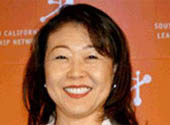 Listen to the audio story from Annenberg Radio News:
Listen to the audio story from Annenberg Radio News: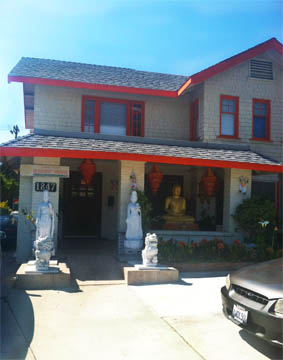 Listen to the audio story from Annenberg Radio News:
Listen to the audio story from Annenberg Radio News: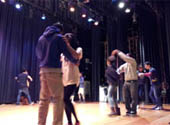 Listen to the audio story from Annenberg Radio News:
Listen to the audio story from Annenberg Radio News: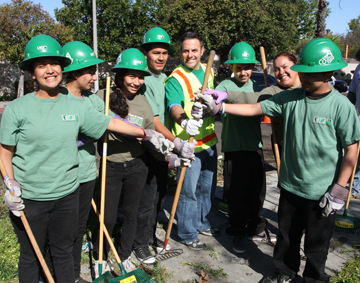 Councilman Joe Buscaino from District 15, joined law enforcement officers and other community activists Saturday to clean up an empty plot of land near 103rd Street and Grandee Avenue in Watts.
Councilman Joe Buscaino from District 15, joined law enforcement officers and other community activists Saturday to clean up an empty plot of land near 103rd Street and Grandee Avenue in Watts.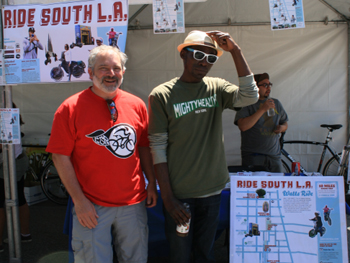 Professor Francois Bar of USC Annenberg Innovation Lab with Tafarai Bayne of T.R.U.S.T. South LA
Professor Francois Bar of USC Annenberg Innovation Lab with Tafarai Bayne of T.R.U.S.T. South LA 




